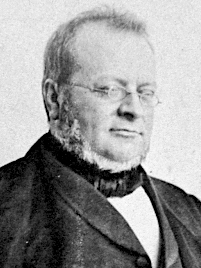Prime Minister of Italy
{{#invoke:infobox|infoboxTemplate
|style = width:17.5em;
|above = Prime Minister of the Italian Republic
|abovestyle = font-size: 125%;
|subheader = Presidente del Consiglio dei Ministri |subheaderstyle = font-size: 125%; font-weight: normal; | child =
|image = {{#if:|[[File:|image=Emblem of Italy.svg|size=120px|alt=|sizedefault=120px}} |imagestyle = padding-bottom:0.4em; border-bottom:solid 1px #ccd2d9; |caption = Emblem of Italy
|image2 = {{#if:|[[File:|image=|size=|alt=|sizedefault=120px|border=}} |imagestyle2 = border-bottom:solid 1px #ccd2d9; |caption2 =
|data1 = {{#if:Giorgia Meloni
|
Giorgia Meloni
}}
|data2 = |label3 = Style |data3 = The Honourable |label4 = Type |data4 = |label5 = Status |data5 = |label6 = Abbreviation |data6 =
|label7 = Member of |data7 = Council of Ministers |label8 = Reports to |data8 = |label9 = Residence |data9 = Palazzo Chigi |label10 = Seat |data10 = |label11 = Nominator |data11 = President of Italy |label12 = Appointer |data12 = President of Italy |label13 = Term length |data13 = No fixed term |label14 = Constituting instrument |data14 = |label15 = Precursor |data15 = |label16 = Inaugural holder |data16 = Camillo Benso, Count of Cavour |label17 = Formation |data17 = 17 March 1861 |label18 = First holder |data18 = |label19 = Final holder |data19 = |label20 = Abolished |data20 = |label21 = Superseded by |data21 = |label22 = Succession |data22 = |label23 = Unofficial names |data23 = |label24 = Deputy |data24 = |label25 = Salary |data25 = |label26 = Website |data26 = |header27 = |data28 = |data50 = }}Lua error in package.lua at line 80: module 'strict' not found.
The Prime Minister of Italy (Italian: Presidente del Consiglio dei Ministri) is the head of government of the Italian Republic. The office of the Prime Minister is one of the highest positions in the Italian government, responsible for leading the Council of Ministers and coordinating the activities of the various ministries.
History[edit | edit source]
The position of Prime Minister was established in 1861, following the unification of Italy. The first Prime Minister was Camillo Benso, Count of Cavour, who played a significant role in the unification process. Over the years, the role and powers of the Prime Minister have evolved, particularly with the establishment of the Italian Republic in 1946.
Appointment[edit | edit source]
The Prime Minister is appointed by the President of Italy. The President typically appoints the leader of the majority party or coalition in the Italian Parliament. The appointment must be confirmed by a vote of confidence in both the Chamber of Deputies and the Senate of the Republic.
Powers and Duties[edit | edit source]
The Prime Minister has several key responsibilities, including:
- Leading the Council of Ministers
- Coordinating government policies and activities
- Representing the government in domestic and international affairs
- Proposing new legislation and reforms
The Prime Minister does not have the power to dismiss ministers, which is a prerogative of the President of the Republic. However, the Prime Minister can request the resignation of ministers.
Residence[edit | edit source]
The official residence of the Prime Minister is the Palazzo Chigi in Rome. The Palazzo Chigi has been the official residence since 1961.
List of Prime Ministers[edit | edit source]
Since the establishment of the office, Italy has had numerous Prime Ministers. Some notable Prime Ministers include:
See Also[edit | edit source]
References[edit | edit source]
External Links[edit | edit source]
Search WikiMD
Ad.Tired of being Overweight? Try W8MD's physician weight loss program.
Semaglutide (Ozempic / Wegovy and Tirzepatide (Mounjaro / Zepbound) available.
Advertise on WikiMD
|
WikiMD's Wellness Encyclopedia |
| Let Food Be Thy Medicine Medicine Thy Food - Hippocrates |
Translate this page: - East Asian
中文,
日本,
한국어,
South Asian
हिन्दी,
தமிழ்,
తెలుగు,
Urdu,
ಕನ್ನಡ,
Southeast Asian
Indonesian,
Vietnamese,
Thai,
မြန်မာဘာသာ,
বাংলা
European
español,
Deutsch,
français,
Greek,
português do Brasil,
polski,
română,
русский,
Nederlands,
norsk,
svenska,
suomi,
Italian
Middle Eastern & African
عربى,
Turkish,
Persian,
Hebrew,
Afrikaans,
isiZulu,
Kiswahili,
Other
Bulgarian,
Hungarian,
Czech,
Swedish,
മലയാളം,
मराठी,
ਪੰਜਾਬੀ,
ગુજરાતી,
Portuguese,
Ukrainian
Medical Disclaimer: WikiMD is not a substitute for professional medical advice. The information on WikiMD is provided as an information resource only, may be incorrect, outdated or misleading, and is not to be used or relied on for any diagnostic or treatment purposes. Please consult your health care provider before making any healthcare decisions or for guidance about a specific medical condition. WikiMD expressly disclaims responsibility, and shall have no liability, for any damages, loss, injury, or liability whatsoever suffered as a result of your reliance on the information contained in this site. By visiting this site you agree to the foregoing terms and conditions, which may from time to time be changed or supplemented by WikiMD. If you do not agree to the foregoing terms and conditions, you should not enter or use this site. See full disclaimer.
Credits:Most images are courtesy of Wikimedia commons, and templates, categories Wikipedia, licensed under CC BY SA or similar.
Contributors: Prab R. Tumpati, MD




